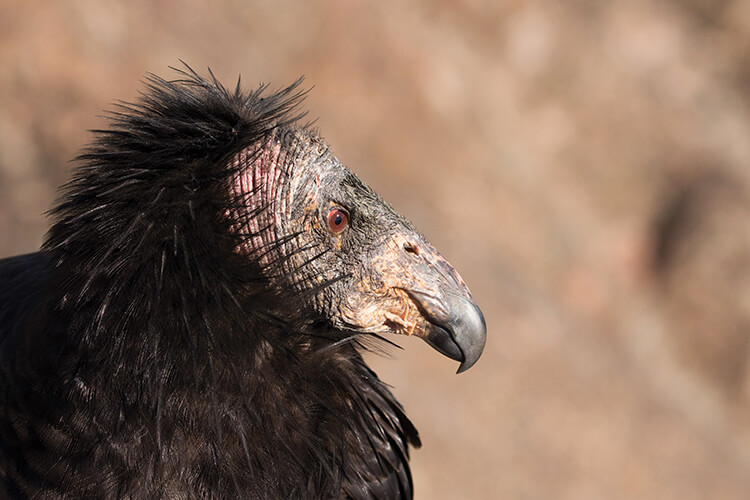 Throughout the summer of 1991, wildlife biologist Kelly Sorenson crisscrossed the Central California coast in a dusty Mazda pickup. On one particularly memorable trip, he drove for seven days straight, up to 14 hours a day, to scout mountain peaks between Big Sur and Marin County. As part of an ambitious species recovery program spearheaded by the Ventana Wilderness Society (which was renamed the Ventana Wildlife Society in 2006), Sorenson tracked bald eagles tagged with radio transmitters.
Throughout the summer of 1991, wildlife biologist Kelly Sorenson crisscrossed the Central California coast in a dusty Mazda pickup. On one particularly memorable trip, he drove for seven days straight, up to 14 hours a day, to scout mountain peaks between Big Sur and Marin County. As part of an ambitious species recovery program spearheaded by the Ventana Wilderness Society (which was renamed the Ventana Wildlife Society in 2006), Sorenson tracked bald eagles tagged with radio transmitters.
In those pre-smartphone days, Sorenson would collect maps from AAA offices, navigate to the next major mountaintop, and search for birds with an antenna.
“Those eagles were so fast. I’d race to the next mountain peak, and they’d be north of me every time,” he laughs.
This year, as the Salinas- and Big Sur-based Ventana Wildlife Society (VWS) marks 40 years of species recovery, habit conservation and educational outreach, a peer-reviewed paper in the June Journal of Raptor Research detailed the successful rehabilitation of central California’s bald eagles. Sorenson, now VWS executive director, was the report’s lead author.
“Back then, we were just a seasonal operation with one little pickup truck,” says Sorenson, who joined the organization 14 years after co-founders Sal and Ada Lucido, Gerry Petkus and Don Petkus launched the nonprofit with a wilderness sanctuary in Big Sur. “We went at it with everything we could, as we tried to get this species back on its feet in northern California.”
Monterey Bay Aquarium Veterinary Services Director Dr. Mike Murray assisted with VWS bald eagle recovery efforts in the 1980s, when he was a private-practice veterinarian on the Monterey Peninsula.
“When they started, there were naysayers at every turn. But this private, grassroots organization had big ideas—and they’ve pulled it off,” Murray says. “They have a great deal of passion and compassion for the animals they help, not only as whole species, but also as individuals.”
Following the successful bald eagle campaign, VWS leaders turned to threatened California condors. For generations, the birds were poisoned as they fed on the remains of animals hunted with lead bullets. To combat the problem, VWS began distributing free, non-lead ammunition in 2012.
That effort, and a captive-bred release program launched 20 years ago in Big Sur, has helped boost the total population from just 22 condors to 446 worldwide.
“We’ve distributed $130,000 worth of ammunition through this program, and area hunters and ranchers have been willingly making the shift,” says Sorenson. “This is the leading reason that condors will survive.”
Though the organization’s Big Sur condor tours are on hold during Pfeiffer Canyon Bridge reconstruction (they’ll resume after the bridge’s scheduled September reopening), VWS staff members continue collaborating with Pinnacles National Park teams to support the birds.
The organization also partners with California State Parks to operate its seasonal Big Sur Discovery Center at Andrew Molera State Park. VWS offers summer-season and school year wilderness camps, nature experiences and other hands-on activities for students ages four through 17, as well.
Ventana Wildlife Society further extends its reach with the help of volunteers like Tim Huntington, a software engineer and photographer who moved to California about 20 years ago. His interest in condors evolved into a regular volunteer role with VWS.
In addition to donating his wildlife images to the organization, Huntington wrote software that helps individuals identify free-flying condors and learn about each bird’s lineage and release history. That information is available at condorspotter.com. He also tracks birds and checks nests with VWS naturalists.
In 2015 alone, Huntington spent more than 120 days following condors on the Monterey County coast. He shot video footage along the way, and later packaged the clips into a 27-minute film called “The California Condors of Big Sur.” The documentary was screened at this year’s San Luis Obispo International Film Festival. On September 8, it will be shown during a VWS event at Carmel’s Sunset Center.
“The film touches on pecking order, new parents and why condors are endangered. You learn about the birds and how they live. You get some real insight into their personalities,” says Huntington.
“Condors are in trouble for manmade reasons, so it makes sense that we would help them recover and survive,” he adds. “The Ventana Wildlife Society brought back the bald eagle, and now there’s a light at the end of the tunnel for condors. In a few years, these birds might be recovered enough that they won’t need management. It’s a fascinating story, and a very worthwhile cause.”
Tim Huntington’s film, “The California Condors of Big Sur,” will be shown at the Sunset Center in Carmel on Friday, Sept. 8, 2017. The $75 ticket price includes hors d’oeuvres, wine and desserts, plus access to the screening, a silent auction and a falconer presentation. For tickets, or to learn more about Ventana Wildlife Society programs, please visit ventanaws.org.